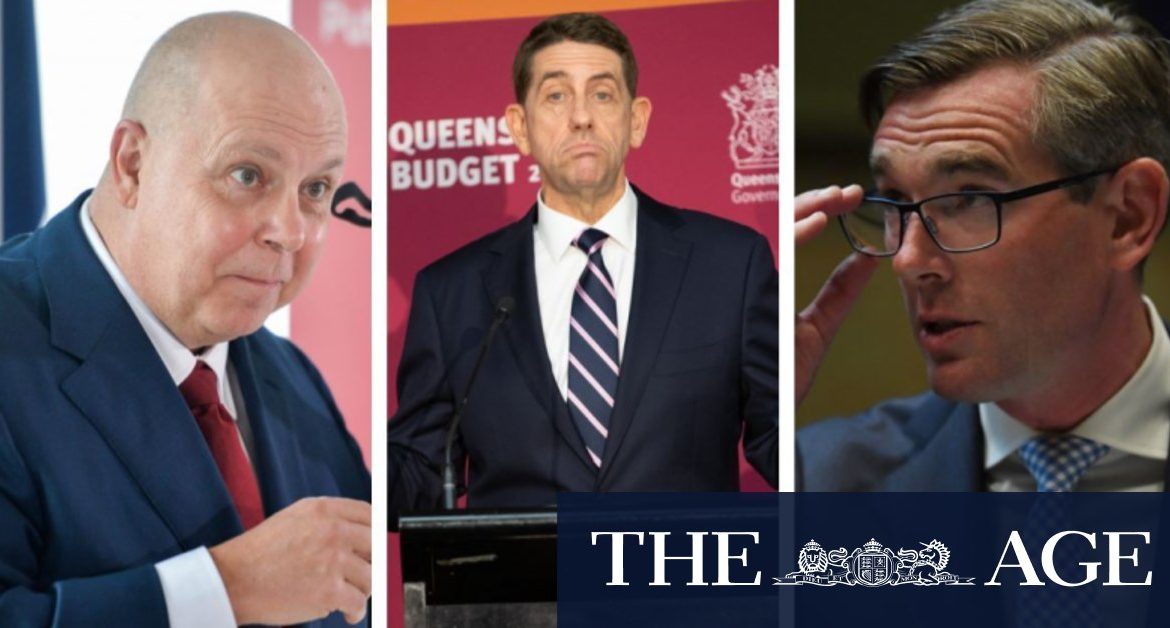Queensland’s net debt is lower than that of its southern counterparts because the state’s superannuation liability is fully funded.
Net debt in Queensland will peak at $51 billion in 2024, compared with $104 billion in New South Wales and $155 billion in Victoria.
Now that big debt is no longer a political death knell, all three treasurers are owning their borrowings.
In his budget speech on November 17, Dominic Perrottet, the Liberal treasurer of NSW since 2017, said choosing not to borrow when interest rates were so low would “inflict long-term damage on future generations, and we won’t let that happen”.
A week later, on November 24, Tim Pallas, Victoria’s Labor treasurer since 2014, said his budget was about “borrowing to keep Victoria’s economy and livelihoods afloat”.
Delivering his first budget as Queensland’s Labor treasurer on Tuesday, Cameron Dick said: “Right now, and for several years into the future, borrowing is the only choice.”
Tax
State governments rake in billions of dollars each year in taxes from pokie machines, parcels of land, car registration, waste disposal, and house sales.
Queenslanders will pay an average of $2767 in state taxes this financial year. This compares with NSW’s debt per capita of $3888, and Victoria’s $3118.
Unemployment
The unemployment rate is expected to peak around Christmas in both NSW (7.5 per cent) and Victoria (8.25 per cent).
Queensland Treasury predicts the state is over the worst of the COVID-induced unemployment crisis, when the jobless rate reached 7.7 per cent in September.
Looking over the hill to the other side of the pandemic, Queensland is expected to have the worst unemployment rate of the three states.
It will take until June 2024 for Queensland’s jobless rate to drop back down to 6.5 per cent, and it is still expected to be higher than NSW (5.25 per cent) and Victoria (5.75 per cent).
Growth
Coronavirus pulled the country into the deepest recession in a century as household spending collapsed and Australians were locked in their homes.
Queensland is projected to be one of the first states to come out of the coronavirus-induced recession, with the economy tipped to grow by 0.25 per cent this financial year.
The only other state predicting economic growth is Western Australia.
NSW’s economy is expected to contract by 0.75 per cent by June 2021, before growing by 2.5 per cent in the next financial year.
Victoria’s gross state product is forecast to shrink by 4 per cent this financial year before rebounding to grow by 7.75 per cent in 2021-22.
Infrastructure spending
The NSW government will spend $107.1 billion on infrastructure in the next four years, almost $30 billion of which will be splashed in the next year.
Queensland will spend $14.8 billion in the next year to build roads, bridges, classrooms, footpaths and hospitals. It will be the biggest spend since 2009-10, when the world was reeling from the GFC.
The state’s total infrastructure spend over the next four years will be $56 billion – about half the sum that NSW has committed to.
The Victorian government has budgeted $78.4 billion for its infrastructure program over the next four years, $19.4 billion of which will be spent in 2020-21.
Lydia Lynch is Queensland political reporter for the Brisbane Times
Most Viewed in Politics
Loading







